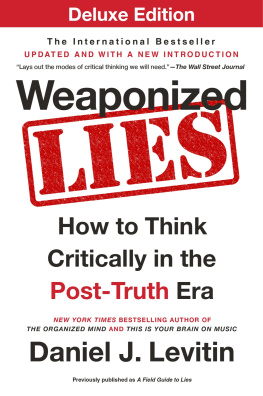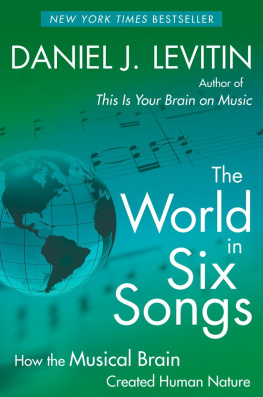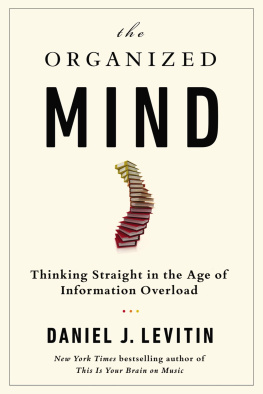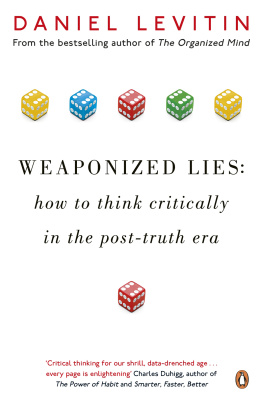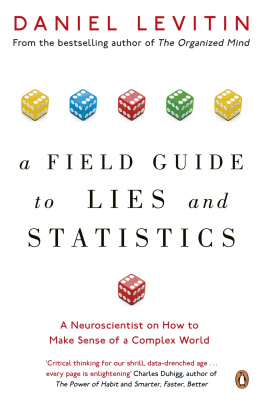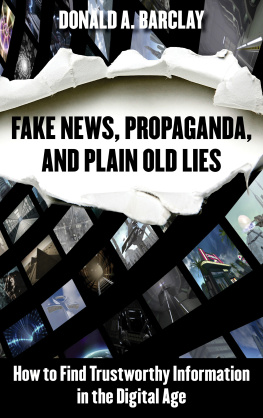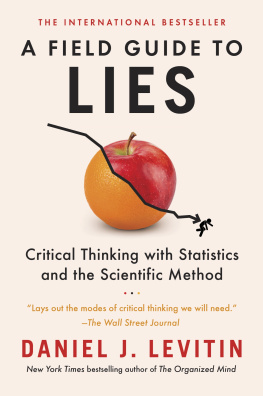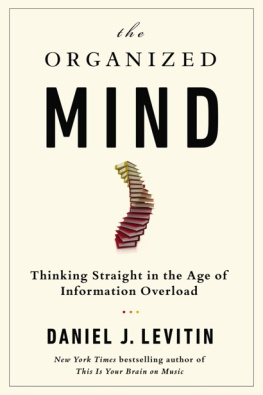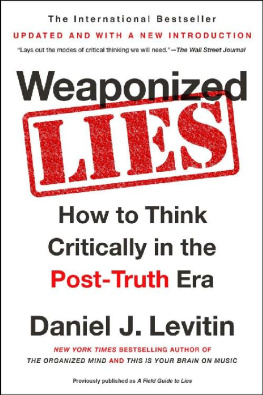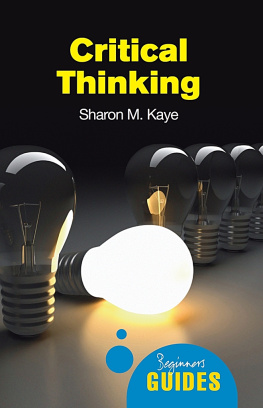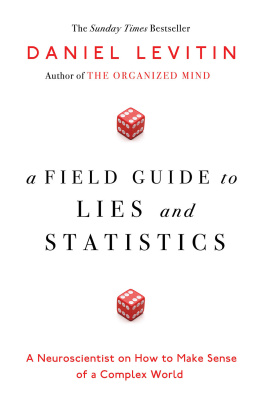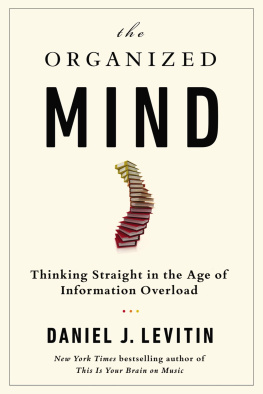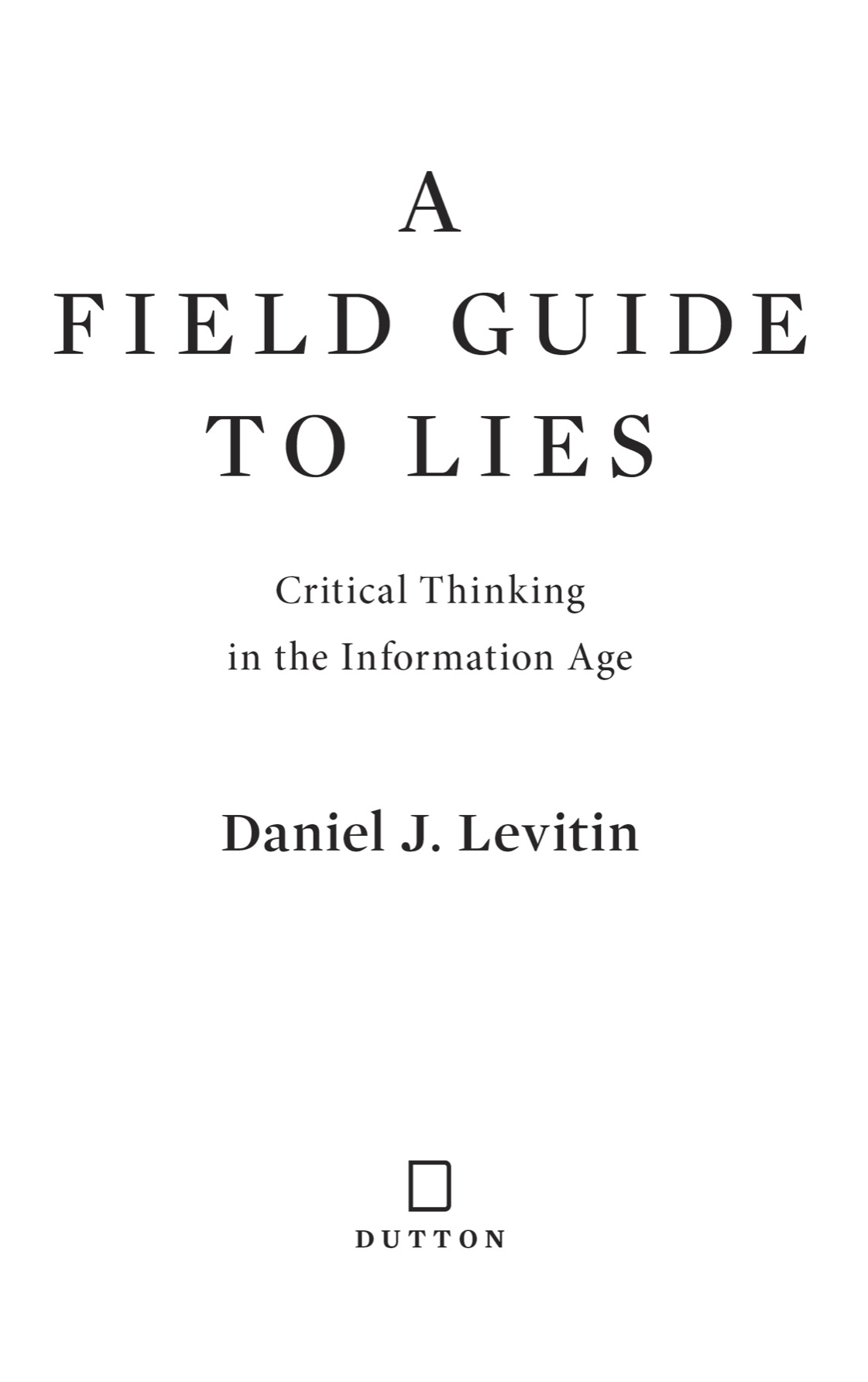Also By Daniel J. Levitin
This Is Your Brain on Music: The Science of a Human Obsession
The World in Six Songs: How the Musical Brain Created Human Nature
The Organized Mind: Thinking Straight in the Age of Information Overload

DUTTON
An imprint of Penguin Random House LLC
375 Hudson Street
New York, New York 10014

Copyright 2016 by Daniel J. Levitin
Penguin supports copyright. Copyright fuels creativity, encourages diverse voices, promotes free speech, and creates a vibrant culture. Thank you for buying an authorized edition of this book and for complying with copyright laws by not reproducing, scanning, or distributing any part of it in any form without permission. You are supporting writers and allowing Penguin to continue to publish books for every reader.
DUTTON is a registered trademark and the D colophon is a trademark of Penguin Random House LLC
All art courtesy of the author unless otherwise noted.
Images 2016 by Dan Piraro, used by permission.
Image 2016 by Alex Tabarrok, used by permission.
Image was drawn by the author, based on a figure under Creative Commons license appearing on www.betterposters.blogspot.com.
Image 2016 by Tyler Vigen, used by permission.
Image was redrawn by the author with permission, based on a figure found at AutismSpeaks.org.
Image is public domain and provided courtesy of Harrison Prosper.
eBook ISBN: 9781101986189
LIBRARY OF CONGRESS CATALOGING-I N-PUBLICATION DATA
Names: Levitin, Daniel J., author.
Title: A field guide to lies : critical thinking in the information age / Daniel J. Levitin.
Description: New York : Dutton, [2016] | Includes bibliographical references and index.
Identifiers: LCCN 2016007356 | ISBN 9780525955221 (hardcover) | ISBN 9781101985588 (export)
Subjects: LCSH: Critical thinking. | Fallacies (Logic) | Reasoning.
Classification: LCC BC177 .L486 2016 | DDC 153.4/2dc23
LC record available at http://lccn.loc.gov/2016007356
While the author has made every effort to provide accurate telephone numbers, Internet addresses, and other contact information at the time of publication, neither the publisher nor the author assumes any responsibility for errors or for changes that occur after publication. Further, the publisher does not have any control over and does not assume any responsibility for author or third-party websites or their content.
Version_2
To Shari, whose inquisitive mind made me a better thinker
CONTENTS
INTRODUCTION
T HINKING , C RITICALLY
This is a book about how to spot problems with the facts you encounter, problems that may lead you to draw the wrong conclusions. Sometimes the people giving you the facts are hoping youll draw the wrong conclusion; sometimes they dont know the difference themselves. Today, information is available nearly instantaneously, but it is becoming increasingly hard to tell whats true and whats not, to sift through the various claims we hear and to recognize when they contain misinformation, pseudo-facts, distortions, and outright lies.
There are many ways that we can be led astray by fast-talking, loose-writing purveyors of information. Here, Ive grouped them into two categories, and they make the first two parts of this book: numerical and verbal. The first includes mishandled statistics and graphs; the second includes faulty arguments. In both parts, I include the steps we can take to better evaluate news, statements, and reports. The last part of the book addresses what underlies our ability to determine if something is true or false: the scientific method. It grapples with the limits of what we can and cannot know, including what we know right now and dont know just yet, and includes some applications of logical thinking.
It is easy to lie with statistics and graphs because few people take the time to look under the hood and see how they work. I aim to fix that. Recognizing faulty arguments can help you to evaluate whether a chain of reasoning leads to a valid conclusion or not. Related to this is infoliteracyrecognizing that there are hierarchies in source quality, that pseudo-facts can easily masquerade as facts, and biases can distort the information we are being asked to consider, leading us to faulty conclusions.
You might object and say, But its not my job to evaluate statistics critically. Newspapers, bloggers, the government, Wikipedia, etc., should be doing that for us. Yes, they should, but they dont always. Weeach of usneed to think critically and carefully about the numbers and words we encounter if we want to be successful at work, at play, and in making the most of our lives. This means checking the numbers, the reasoning, and the sources for plausibility and rigor. It means examining them as best as we can before we repeat them or use them to form an opinion. We want to avoid the extremes of gullibly accepting every claim we encounter or cynically rejecting every one. Critical thinking doesnt mean we disparage everything, it means that we try to distinguish between claims with evidence and those without.
Sometimes the evidence consists of numbers and we have to ask, Where did those numbers come from? How were they collected? Sometimes the numbers are ridiculous, but it takes some reflection to see it. Sometimes claims seem reasonable, but come from a source that lacks credibility, like a person who reports having witnessed a crime but wasnt actually there. This book can help you to avoid learning a whole lot of things that arent so. And catch some lying weasels in their tracks.
Weve created more human-made information in the last five years than in all of human history before them. Unfortunately, found alongside things that are true is an enormous number of things that are not, in websites, videos, books, and on social media. This is not just a new problem. Misinformation has been a fixture of human life for thousands of years, and was documented in biblical times and classical Greece. The unique problem we face today is that misinformation has proliferated; it is devilishly entwined on the Internet with real information, making the two difficult to separate. And misinformation is promiscuousit consorts with people of all social and educational classes, and turns up in places you dont expect it to. It propagates as one person passes it on to another and another, as Twitter, Facebook, Snapchat, and other social media grab hold of it and spread it around the world; the misinformation can take hold and become well known, and suddenly a whole lot of people are believing things that arent so.
There is content at this location that is not currently supported for your device. The caption for this content is displayed below.
Introduction
PART ONE
EVALUATING NUMBERS
It aint what you dont know that gets you into trouble.
Its what you know for sure that just aint so.
MARK TWAIN
P LAUSIBILITY
Statistics, because they are numbers, appear to us to be cold, hard facts. It seems that they represent facts given to us by nature and its just a matter of finding them. But its important to remember that

